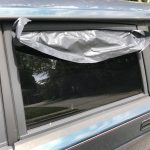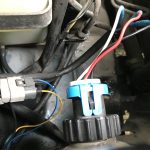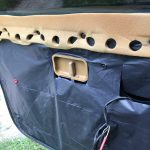After showing my car to a friend who is a legit and long-time “car guy” who has fixed and restored many of his own cars and hearing him comment at how dirty the engine bay was, I decided that until the parts I’m waiting on arrive from the magical land of plenty known as Sweden I could start cleaning that up. I looked around on the internet for some tips and came across this video from YouTuber ChrisFix. In it he gives a step-by-step example of how to clean out the bay and improve the old, crappy stuff. In my spare moments I decided to start taking out certain bits that might be in the way. This included the windshield wiper reservoir, the radiator overflow tank, the battery and its tray, and a few other bits and bobs that either needed cleaning or replacement. I also took out a bunch of very corroded screws, bolts, and pipe clamps that I’ll replace with new, shiny ones.
When I get the opportunity I’ll bring the shop-vac and some brushes in for the dry clean and then the hose (and possibly the pressure washer) for the wet stuff. One thing this exercise has shown me is that my hood is missing the sound insulation normally found under the hood. A replacement is sort of spendy, so there’s a chance I’ll just buy the material and make my own or wait until I find a cheaper original.















